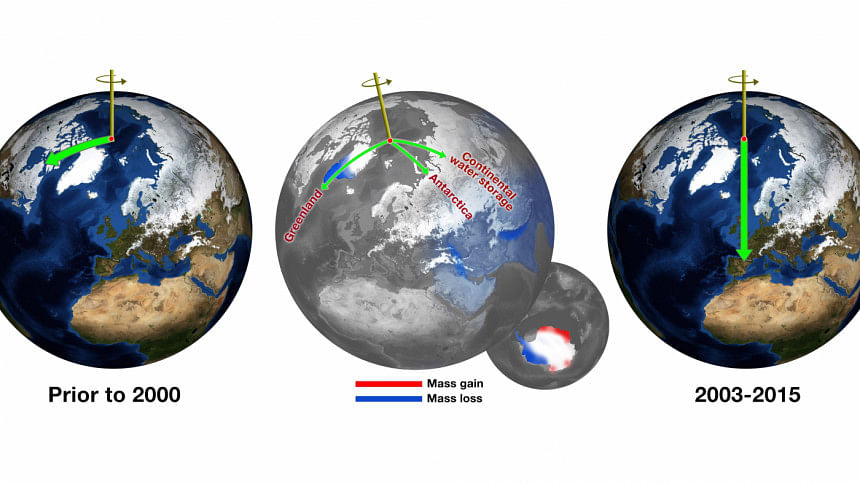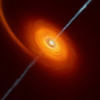Scientists now know why North Pole is moving

Scientists thought that they finally came to know the reasons behind the movement of North Pole.
It's not terribly unusual for the rotational pole of a planet to shift, especially since the earth is not perfectly spherical. It tends to wobble a little as it spins on its axis, reports Business Insiders.
But that wobble seems to be turning in to a big swing, according to a study published today in the journal Science Advances, which we first heard about from Gizmodo, and it's probably because of human activity, the newspaper reports.
The North Pole had previously been drifting westward toward Canada's Hudson Bay. But in 2000, the pole started changing direction and heading eastward — twice as fast as normal.
Now scientists believe that the changes of distribution of mass on the planet's surface are responsible for the shift, reports Business Insiders.
So how did human beings manage to change a planet's mass so significantly? By shifting the balance of water and ice on land through global warming.
The rapidly destabilizing ice sheets in Greenland and Antarctica play a large role here. But the research team ran new computer models that suggest the loss of water in Eurasia around India and the Caspian Sea was enough to change the pole's path, jerking it eastward.
The team used gravitational anomaly data from the Gravity Recovery and Climate Experiment (GRACE) satellite to power their simulations, which show that the earth's axis is particularly sensitive to changes in water mass at the mid-latitudes, reports Business Insiders.
So while Greenland and Antarctica are suffering massive ice losses, and depletion of aquifers in Eurasia is relatively on balance, a much smaller loss of water closer there makes a much bigger difference.
The research is worrisome in that it suggests the North Pole's drifting pattern has a strong link to climate. There is a silver lining, though: Past records of polar drift, which we've kept for 115 years, might also be a thorough record of water and ice changes around the earth, reports Business Insiders.
"That could tell us something about past climate — whether the intensity of drought or wetness has amplified over time, and in which locations," Surendra Adhikari, a NASA earth scientist and study coauthor, said in a press release.
So as Asia starts to dry out and ice sheets at both ends of the earth shrink rapidly, it's very possible that we'll see even more severe shifts in the way the world turns — and where Santa is supposed to live.

 For all latest news, follow The Daily Star's Google News channel.
For all latest news, follow The Daily Star's Google News channel. 








Comments